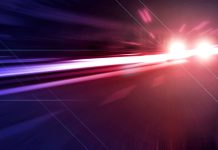A few years ago I interviewed a southern Californian doctor who
had recently returned from an educational exchange in China.
He told me,
”
It was kind of weird. In one room you have a modern medical
facility, but go into the next room and they’re poking people with
needles and calling it healing.
”
A few years ago I interviewed a southern Californian doctor who had recently returned from an educational exchange in China.
He told me, “It was kind of weird. In one room you have a modern medical facility, but go into the next room and they’re poking people with needles and calling it healing.”
But is it weird? The Chinese believe strongly in a complex reality. Given a choice between two conflicting statements of fact, they would tell you that both are likely true. In our own eclectic society, can’t the ancient and the modern co-exist?
You bet. Western doctors are referring their patients for acupuncture more than ever. In fact, referrals for acupuncture surpass those for chiropractic work and massage, according to a 1998 survey of text published by the Archives of Internal Medicine.
Although a relatively small number of Americans have tried the practice – only 4 percent – it has been practiced professionally in the United States for around 30 years. Most acupuncturists practicing today were only certified in the last 10 years.
Ahnna Goossen, a licensed acupuncturist who just took over the Acupuncture and Herbal Clinic of Gilroy, has been in practice for two and a half years.
“Insurance companies are loving acupuncture more and more,” said Goossen. “I have a lot of doctors referring patients to me. There used to be some problems, but acupuncturists and MD’s are starting to build a relationship, a referral relationship.”
Using whisker-thin, painless needles, Goossen manipulates the flow of Qi (pronounced “chee”) in the body. In ancient Chinese medicine, Qi is the life energy that animates the body, protecting people from illness, pain and disease.
Fourteen pathways of this energy connect not only to muscle groups, but to organs and glands as well. When these energy pathways become blocked due to fatigue, overexertion, injury or other trauma, a person’s Qi is inhibited, depressing aspects of that person’s physical, mental and emotional well-being.
Acupuncturists are not witch doctors. They are required to complete a high degree of schooling and are also regulated by the state. Goossen’s title came to her only after four years of intensive study. And even if you don’t believe in the power of Qi, the benefits of acupuncture still apply.
A full 75 to 80 percent of Goossen’s practice is made up of patients undergoing pain management therapies, generally because of workman’s compensation. The second bulk of her business is hormone-related, treating the migraines, hot flashes and night sweats associated with menopause. She’ll do everything in her power to correct a problem, often with great success, but some cases are out of her hands.
“I can do a lot of things, but there are some illnesses, like an active urinary tract infection, where I’ll tell the patient, ‘You need to go see a doctor,'” said Goossen.
Goossen gives her patients a thorough spa experience – soothing music, low lighting and candles – as well as a holistic overhaul for an initial cost of $80 and $65 for each additional visit. Her newest treatment, a non-surgical facelift, is $80 per treatment.
For more information or to schedule a visit, call Ahnna at (408) 842-9688 or visit www.GilroyAcupuncture.com. For state information, including information on a potential acupuncturist’s license or any actions taken against any acupuncturists, visit www.acupuncture.ca.gov.












